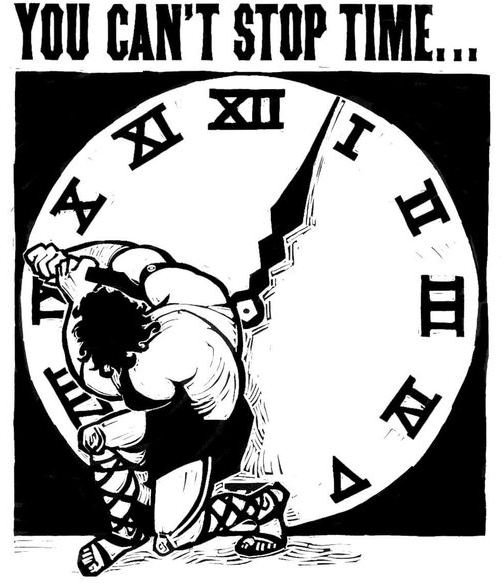How to Make Chronemics Work in Project Management
Chronemics 101
In simplest terms, chronemics is the perception of time within a workplace culture or even regional culture. Factoring into this understanding are punctuality or habitual lateness, schedule adherence or variation, patience or impatience, and also the rapidity of speech or its slowness. Chronemics affects each individual differently; some do not mind waiting while others get impatient if a project team member is even five minutes late.
The Internet TESL Journal defines chronemics as the “use of time, waiting, pausing,” which must be understood for proper communication. If this type of understanding becomes part of the project manager’s non-verbal communication skill set, the professional has a better chance of achieving:
- Effective team management
- Positive project atmosphere
- Enhanced team member participation
- Reduced team member miscommunications
- Constructive peer discipline
Communicaid Blog experts consider cultures to be predominantly monochronic or polychronic. If you consider the United States as favoring a mostly monochronic understanding of time, it makes sense that scheduling is an important aspect of time management. Most tasks have a predefined start time and a predetermined end time. In contrast,Mexico is primarily polychronic with respect to time use. Starting and ending times are agreed upon arbitrarily and subject to change; there is less formality in time-keeping, and precision is not considered a necessity for schedule adherence.
Incorporating Chronemics in Project Management
It is worthwhile to point out that there is no right or wrong type of chronemics. Both approaches to time management have their advantages and drawbacks. Working with these principles in mind–rather than insisting on the observation of only one concept to the exclusion of reigning business or local culture–makes project management effective and truly multinational. So how can you do it?
Within a Polychronic Corporate Culture
Recognize that time is truly relative. The project manager must use a high level of flexibility and benchmark only the absolutely necessary steps. Micromanagement is a waste of time. Indeed, in this setting it is the personal relationship between the project manager and team members that leads to the voluntary adherence to requested deadlines. Since relationships trump the project for its own sake, a good working relationship leads to easy time management.
When Dealing With a Monochronic Business Culture
The project manager must realize that these workers thrive on clearly defined time lines and benchmarks. Schedule adherence is an integral part of the work process; failure to provide ample plan details leads to a floundering team that has few–if any–rules to follow. Micromanagement and selective delegation may be acceptable in some settings, unless the project knowledge of the individual workers makes this practice counterproductive.
Secret to Success: Buy-in

It is interesting to note that there is one segment of the project management process where chronemics has profound effects on the long-term viability of the working relationships and product outcomes: The buy-in phase. At the time that the project manager shares the vision for the project with the chosen project team members–and also the departments–there must be a solid buy-in that transcends business culture. To do so, it is vital to bring an understanding of business culture–and chronemics!–into play for maximum effect.
As already highlighted, the professional must focus predominantly on the relationship-building aspects of the buy-in when dealing with the polychronic team. Unity is a key component for success. Spend a lot of time on team-building exercises and also opportunities for team member socialization after work and even during working hours. Tie in the vision for the project with the interpersonal aspects of achieving desired results.
In the monochronic setting, emphasize the framework of the plan and the need for strict schedule adherence. Showcase opportunities to achieve benchmarks in relatively short periods of time and tie the team’s sense of self-worth to these achievements. Minimize socialization and instead unify team members through a vision of working for a common goal or outcome.
Dealing With Multiple Understandings of Time
As a theoretical model spanning entire departmental cultures, the implementation of chronemics sounds surprisingly simple. But what do you do if individual team members fall into varying camps with respect to time understanding?
Case in point is the use of email. Some project team members are good at quickly responding to an email, even if it is only done to acknowledge receipt. In other cases, the workers may not respond at all, simply because they have nothing to add and therefore there is no sense in cluttering the relationship with a useless response. For the predominantly monochronic project manager, this is difficult to accept. A possible work-around–in this setting–includes the use of an auto-response feature that alerts the project manager when an email is received. Rather than consistently battling over non-responsive team members, set up the system to work in the project manager’s favor.
Understanding the Undercurrents
Chronemics in nonverbal communication is an extremely useful pattern of understanding undercurrents and making them work for project success. Yet only if the professional manages to take a value-neutral approach to this type of communication–as opposed to a heavily opinionated stand–can she truly make these intricacies work to take a project from well done and on time to spectacular and outstanding.
References
- Communicaid Blog; http://blog.communicaid.com/cross-cultural-training/chronemics-concept-of-time/
- Photo Credits: “You Can’t Stop Time” by Rutrus/Wikimedia Commons via GNU Free Documentation License, Version 1.2; “The Profile of Time” by Stephen Dawson/Wikimedia Commons via Creative Commons Attribution-Share Alike 2.0 Generic license
- Internet TESL Journal; http://iteslj.org/Articles/Darn-Nonverbal/
